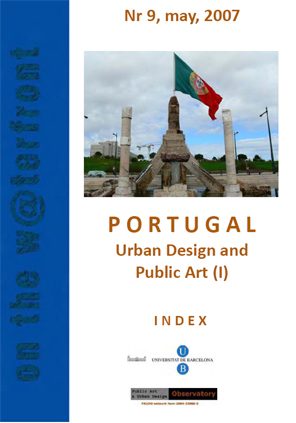SANTA APOLÓNIA, LISBON – LOST LINK WITH THE RIVER
Abstract
Since very early in history, the importance of maritime commerce and fluvial navigation has been crucial for
Lisbon’s development. The waterfront and the city were strongly connected, until the end of the 19Th century,
when railway clearly isolated the port from the metropolis. Riverside areas rehabilitation really began only two
decades ago, along with urban regeneration politics.
Nowadays, Lisbon’s port is confronted with the necessity of keeping up with other ports as commercial
emporium and tourist platform. At the same time, reintegration of the riverside into the city space is needed, as
a way to qualify Lisbon’s public space and recover the lost identity of this “city of water”.
In the waterfront of Santa Apolónia, those realities have great importance as it situates near the
historical and popular quarter of Alfama, functionally and socially connected with the river since Islamic
occupation, almost 1000 years ago.
Santa Apolónia’s public space is analysed from different physical and social perspectives. Problems as
degradation, privatisation, gentrification and segregation are detected in this area, reinforcing a spatial and
functional discontinuity waterfront/city.
The old Santa Apolónia’s rail station plays a central role. Multifunctional and open to all, this public
space acts as a dynamic centre of the place and stands as a reference of city’s memory.
Possible solutions for sustainable development and the creation of a place of identity for citizens are proposed:
facilities for locals, careful design of public space, public art for all
Published
How to Cite
Issue
Section
License
The
 licence allows: Share — copy and redistribute the material in any medium or format and Adapt — remix, transform, and build upon the material for any purpose, even commercially.The licensor cannot revoke these freedoms as long as you follow the license terms. Author's rights are protected by the ISSN 1139-7365. On the w@terfront has no restrictions respect the copyright by the authors and does allow authors to retain the publishing rights without restrictions.
licence allows: Share — copy and redistribute the material in any medium or format and Adapt — remix, transform, and build upon the material for any purpose, even commercially.The licensor cannot revoke these freedoms as long as you follow the license terms. Author's rights are protected by the ISSN 1139-7365. On the w@terfront has no restrictions respect the copyright by the authors and does allow authors to retain the publishing rights without restrictions.This journal does not apply any type of charge to the authors for the presentation or processing of the articles.







